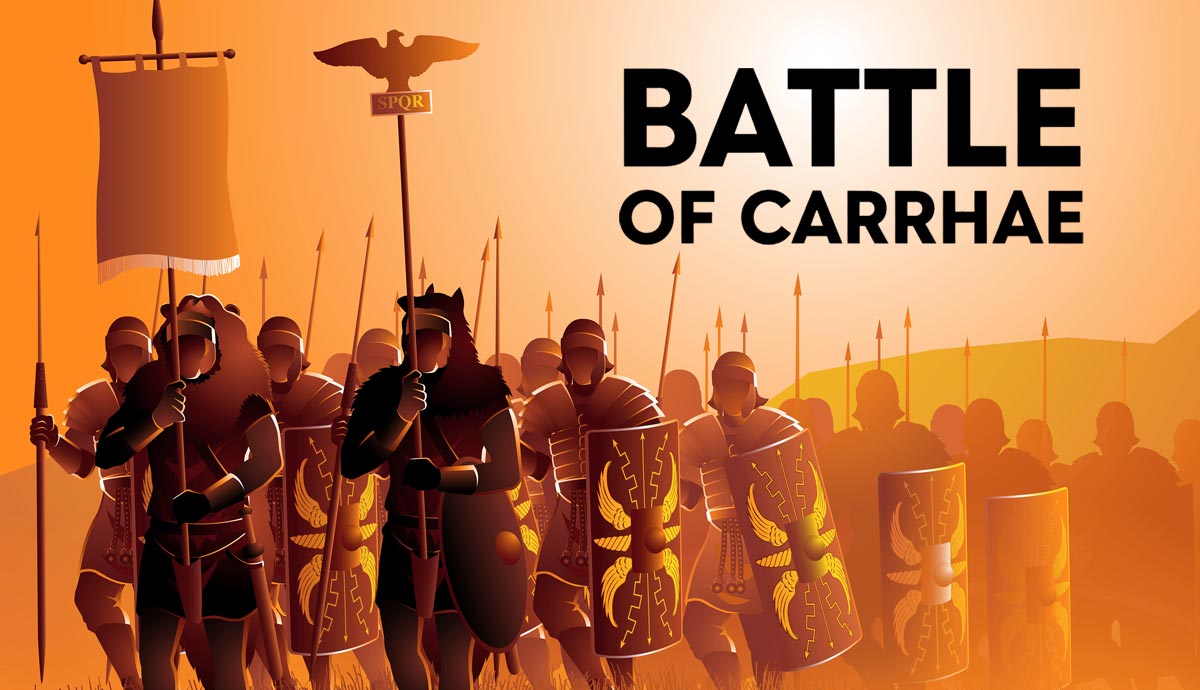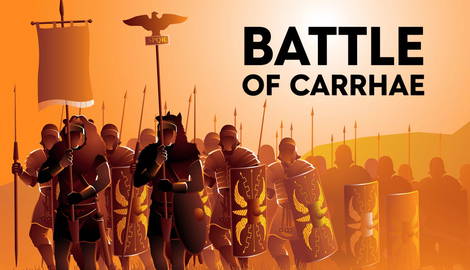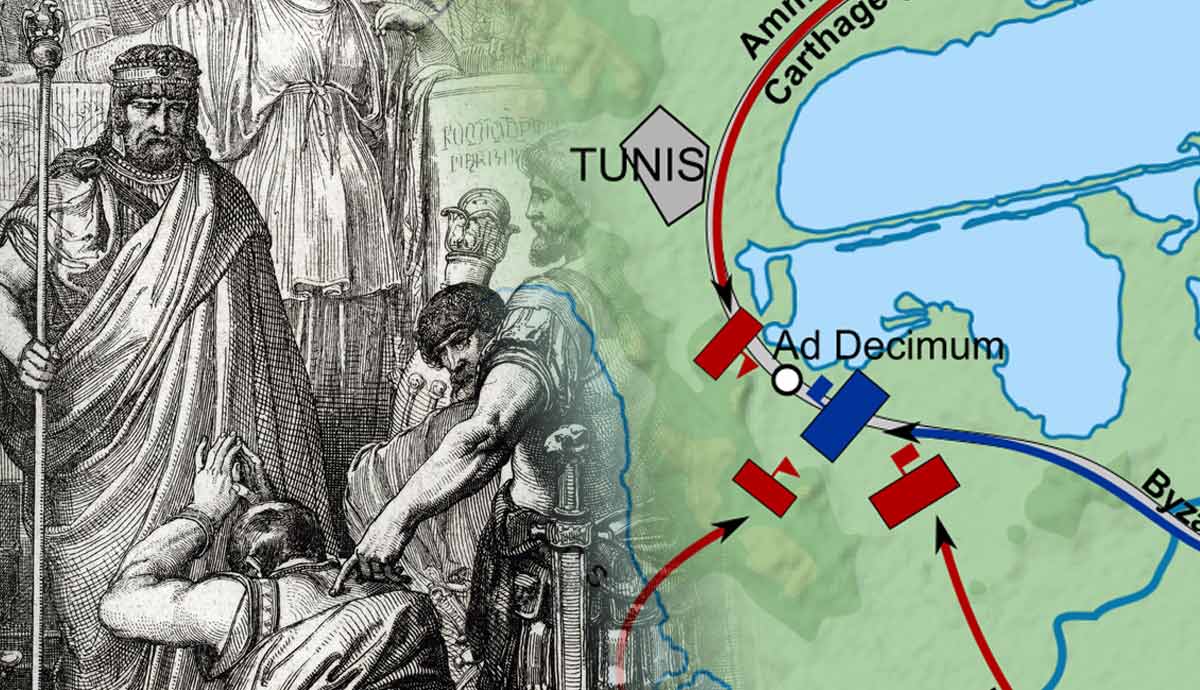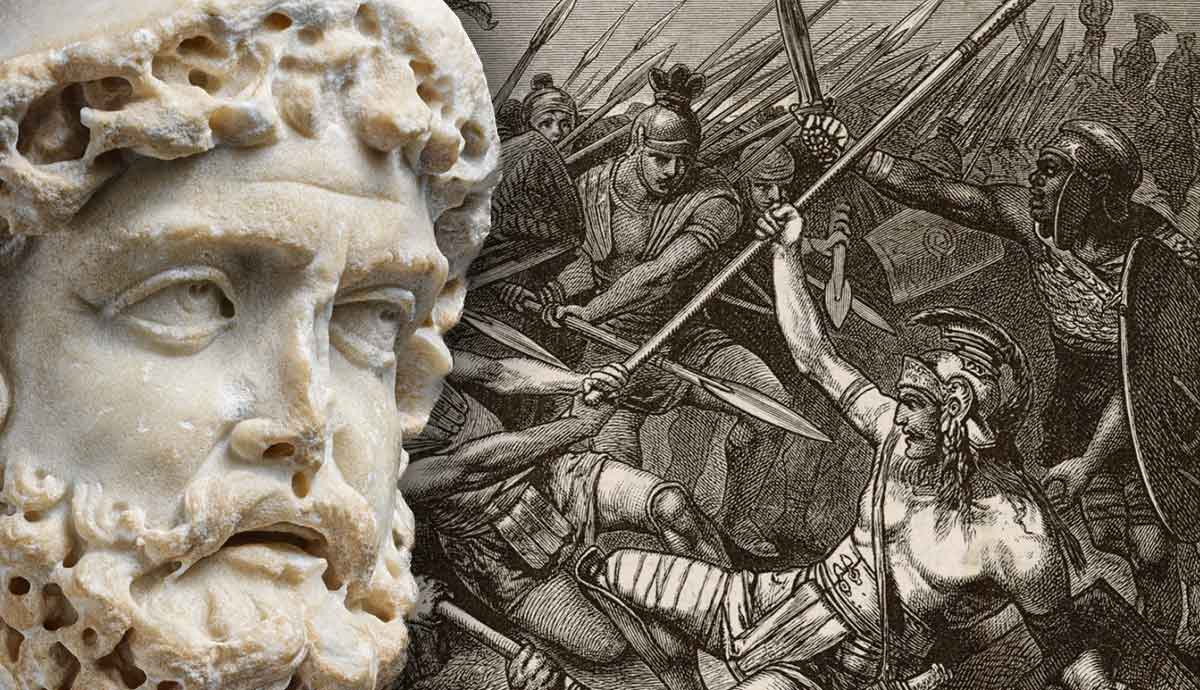
In 53 BCE, one of the most powerful Romans of the time led his army eastward, hoping to achieve the kind of glory and legacy that Julius Caesar had earned on the battlefield. Instead, Marcus Licinius Crassus walked straight into a trap and became remembered for one of the greatest military defeats in Roman history. At the Battle of Carrhae, on the barren plains of Mesopotamia, Crassus dangerously underestimated the Parthian Empire. In addition to the massacre of tens of thousands of Roman soldiers, this defeat exposed the true limits of Roman power and marked the beginning of a deeper crisis within the Republic.
The Rise of Marcus Licinius Crassus

To understand the tragedy at Carrhae, we must first understand the man who set everything in motion. Marcus Licinius Crassus was born into a wealthy patrician family during a turbulent era of violent political unrest and civil wars. In the conflict between Lucius Cornelius Sulla and Gaius Marius, Crassus first demonstrated his military skills and helped restore Sulla to power.
After the war, Crassus continued to amass his fortune, but that wasn’t enough for him. He craved glory, power, and the legacy that came with successful military campaigns. His perfect opportunity came in 73 BCE, when slaves rose up under the leadership of the gladiator Spartacus. Crassus commanded eight Roman legions and eventually crushed the rebellion after two years. However, this victory didn’t bring him fame, as Pompey ultimately took most of the credit.
In 60 BCE, Crassus allied with Pompey and Julius Caesar, forming the First Triumvirate. Yet among the three, Crassus remained the least popular. Caesar conquered Gaul, Pompey cleared the seas of pirates and expanded Roman territory in the East, while Crassus lacked such a defining triumph.
Despite being one of the richest men in Roman history, Crassus was haunted by the absence of military glory. Wealth had brought him power, but not admiration. In the eyes of Roman society, true greatness was earned on the battlefield. Watching his allies gain fame through conquest only sharpened his desire to be remembered as a hero. For Crassus, Parthia offered not just opportunity, it offered a legacy.
The Parthian Empire and General Surena

In the East, a new empire was rising and growing stronger, the Parthian Empire. They were not merely a regional power but a significant geopolitical force and one of the few opponents with the capacity to challenge Rome.
The Parthians were a group of nomadic tribes who had overthrown the Seleucid Empire and built their own state on its ruins, blending traditional Persian elements with Hellenistic culture. Their capital was Ctesiphon, located near modern-day Baghdad, and the empire stretched from the Euphrates River to the border of India. Unlike Rome, the Parthian Empire was more decentralized, with a king at its head who stood over powerful regional leaders.
What set the Parthians apart was their superior cavalry. Their horse archers were considered the best of the time, using tactics that involved showering the enemy with volleys of arrows and retreating before engaging in open combat. Especially notable were their cataphracts, heavily armored cavalrymen clad in chainmail from head to toe, riding equally armored horses.
At the time of the Battle of Carrhae, the Parthian army was led by the nobleman Surena. Though relatively young, he was already considered one of the most brilliant military commanders of his era. Plutarch described him as a tall, charismatic, and magnificent looking man.
“Surena was an extremely distinguished man. In wealth, birth, and in the honor paid to him, he ranked next after the king; in courage and ability he was the foremost Parthian of his time; and in stature and personal beauty he had no equal.” Plutarch, Crassus 21
During the battle, Surena executed one of the finest examples of the feigned retreat tactic in ancient history.
The Roman Campaign Begins

Without the Senate’s approval, Crassus began his campaign by leading nearly 40,000 soldiers across the Euphrates River. Upon arriving in Mesopotamia, he was approached by an ally, King Artavasdes II of Armenia. Artavasdes advised Crassus to take the northern route through Armenia, even offering military support. Crassus refused. He decided to march directly through Mesopotamia, hoping his triumph would come as quickly as possible.
This decision proved fatal for the Romans. Even before the battle began, Roman troops were already suffering losses due to extreme heat and thirst. Crassus impatiently awaited the enemy, believing the Parthians would meet him in open battle. But the enemy never came. Instead, the Parthians vanished into the vast plains. There were no cities for Crassus to occupy, no supply depots to loot, only endless open terrain and a growing sense of unease. By the time the actual battle arrived, the Roman soldiers were completely exhausted and demoralized, in no condition to fight.
Chaos at Carrhae

After an exhausting march through Mesopotamia, the enemy finally appeared, but not in the way Crassus had expected. From the empty vastness, the Parthian cavalry emerged with thousands of soldiers riding in perfect harmony. There was no infantry, no supply wagons, no siege engines. The precision of the Parthian cavalry’s attack shocked the Romans. Armed with powerful composite bows, they began firing a hail of arrows at the Roman soldiers from a distance. Their arrows were so strong that they easily pierced Roman armor and shields. The legionaries, skilled in close combat, could now only stand helplessly, trapped in the open field, waiting for the rain of arrows to end.
Crassus ordered his men to form the testudo, a defensive formation in which soldiers interlocked their shields above and around themselves, forming a protective shell. This order from Crassus also turned out to be a mistake. The arrows kept falling without end, and the soldiers inside the testudo could not breathe. Many collapsed from heatstroke or dehydration before even being hit by an arrow.
Soon, Parthian camels appeared on the battlefield carrying thousands of extra arrows. When the horse archers ran out of ammunition, they simply moved to the side and took more arrows. There was no pause for the Romans, only wave after wave.
In a desperate attempt to escape the deadly trap, Publius Crassus, son of Crassus, volunteered to lead over 1,000 cavalry and several thousand infantry to attack the Parthian flanks. For a moment, this move seemed successful, and it looked like the Parthians were retreating, but the Romans had actually fallen into another trap. Publius’s unit was now far from the main Roman force, and the Parthians could attack with their cataphracts.

Surrounded on all sides, Publius and his soldiers fought bravely but were completely defeated. To avoid capture, Publius took his own life. The Parthians mounted his head on a spear and returned to the main Roman army to parade it before Crassus. This act signaled to the Roman army that they had lost, but the tragedy was not over yet.
Roman soldiers began to retreat while Parthian cavalry pursued and slaughtered them one by one. Not even the night helped the Romans, as the retreat was disorganized and chaotic. Crassus still hoped he could regroup near the city of Carrhae and continue the campaign.
Crassus’s Death and the Roman Rout

After the humiliating defeat in which his son also lost his life, Crassus attempted to regroup what remained of the once-mighty Roman army. The following day, the Parthian commander Surena offered Crassus peace negotiations, which he accepted. Crassus was suspicious of Surena’s offer, but he had no choice but to trust him.
Exactly what happened during the negotiations is unknown. Some accounts report that the atmosphere quickly became heated and escalated into violence, while others suggest that the Parthians had deliberately set a trap for Crassus. He never returned alive from the talks and was most likely killed by a Parthian sword. According to legend, the Parthians mocked Crassus’s greed by pouring molten gold into his mouth.
When the Roman soldiers near the city of Carrhae learned of Crassus’s fate, they attempted to retreat. In the end, out of the original 40,000 soldiers, half were killed, 10,000 were captured and taken deep into the Parthian Empire, and the remainder successfully withdrew under the command of Gaius Cassius Longinus.
Crassus’s death also marked the end of the First Triumvirate and opened the path to a civil war between Caesar and Pompey. On the other side, General Surena did not enjoy the fruits of his victory for long. Out of jealousy or fear of a potential usurpation, the Parthian king had Surena executed. The Parthians remained a strong geopolitical force for centuries, and the Romans never succeeded in conquering them. It was only with the rise of the Sassanids in the 200s CE that the Parthian Empire came to an end.










